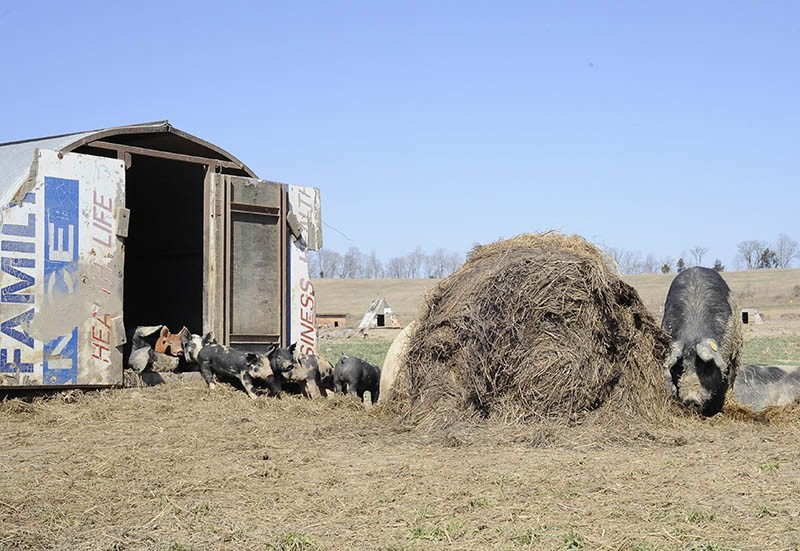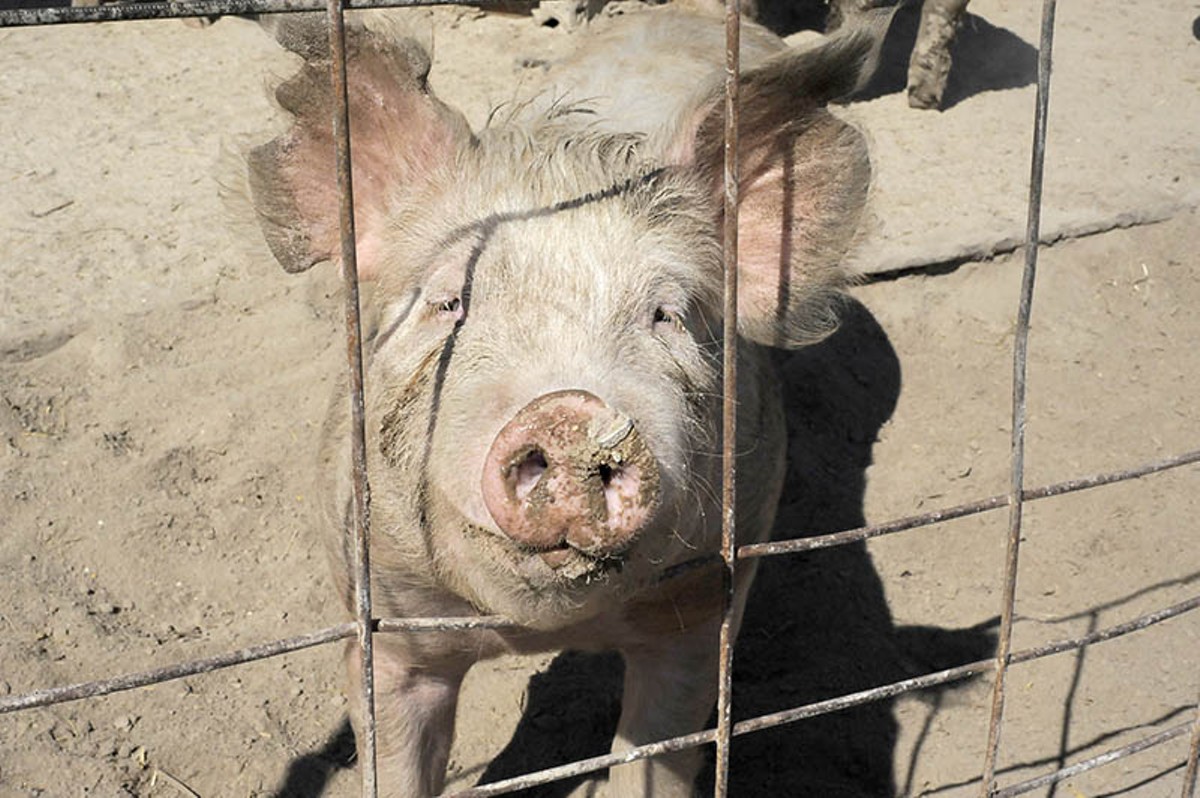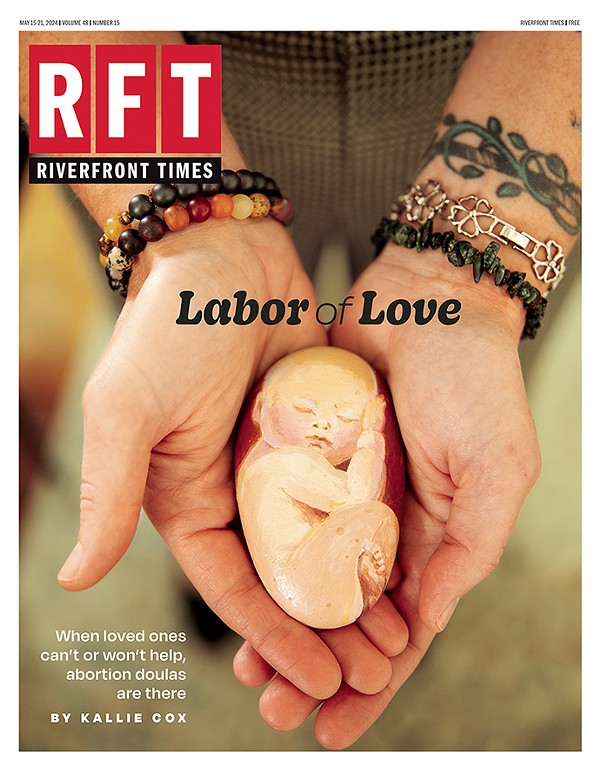
Leaving Geisert's farm on that Saturday morning, I again forgot about the most basic elements of the farm-to-table experience. Even though the hundreds of pigs at Geisert are moved through the process in a way unheard of at factory farms, it's not as if Earnest and I were heading there to select and harvest a pig on our own. We weren't going to shoot one and butcher it on site. We weren't going to sit down and dine with the farm crew. We weren't going to walk out of there with, let's say, a raw ribcage or leg in a styrofoam cooler of ice.
Instead, we were there to tackle a couple of very, very basic steps in the process. And after that, we'd get to buy some goods from the roadside display cases out front. But first came the work.
On that Saturday morning, twenty pigs were going to be pulled from the biggest of the pig lots. Each animal was going to go through a pen, with females ready for their next round of mating getting a bright orange checkmark on their backs. They had a reprieve.
It was the males, on this morning, who were the targets. Twenty of them were going to be hustled into one particular chute, where they'd be funneled in a holding pen until Monday morning. And then, on Monday, they'd be slaughtered.
Holding large wooden boards, we chirped at the herd and formed something of a solid wall, forcing the animals into a single direction –- or at least that was idea, broken by the occasional, individualistic, extremely willful pig.
When our work was done with the Group of Twenty, the pigs were lying around that holding pen in no particular order. Some crashed out on hay bales. Others poked around the fence line. A few bantered with us, or each other. None of them, of course, had the mental capacity to realize they were heading to the butcher on Monday, or that three of them would make their way to the kitchen of the Rooster Savory Commissary, a sixteen-person operation in the back of the second, larger iteration of the Baileys' Restaurants' Rooster concept, on South Grand.
I joined them on Wednesday. There, only a few days after lolling around that holding pen on Geisert's farm, the pigs were being literally broken down into sections by commissary lead cook Jeff Schembri: bellies, tenderloins, loins, shanks for osso bucco. Some would be served on-site, while more would be sent off from this kitchen to the other Baileys' restaurants around the city.
My moment of almost-dumbstruck awe (those Washington County pigs were these St. Louis City cuts of meat) wasn't laughed away by Baileys' executive chef, Stephen Trouvere.
For Trouvere, the "aha" moment came early in his career, while working with a primitive animal indeed: the lobster.
Potting them in boiling water, "I realized the discomfort was very personal in those moments," he says. "How am I going to be OK with this? First, everything dies. The death that I'm offering is as quick and painless as these things can be. If I'm going to kill it, I thank it first, as a willing agent in this exchange."
While we conversed about his theories on meat production and usage, he cooked for me. My part of the process was passive: buying a four-pack of pork burgers and a pound of bacon from Geisert's stand. From there, Trouvere fired up a large oven in the commissary and proceeded to slowly make me a fairly delicious pork burger, dropping on a third slice of bacon "because, why not?"
Trouvere says that working for Baileys, which employs meats from farms such as Geisert's and Rain Crow Ranch, is essential to him having the stomach, so to speak, to work in the profession. He suggests that most of the applications he receives come from people who want to work with food that's as local, organic and low-impact-in-creation as possible. That goes for plants, grains, meats.
With Geisert's hogs being ground, sliced, chopped and diced nearby, Trouvere said that you don't consider "the process of death until you see it in the anatomy. Being able to reconcile it all is part of a human, intelligent process. I'm comfortable with buying from someone like Todd; it's far-and-away better than buying from Hormel. And I don't have enough data to answer whether or not guests are informed about our practices. But my hunch is 'yes.'"






